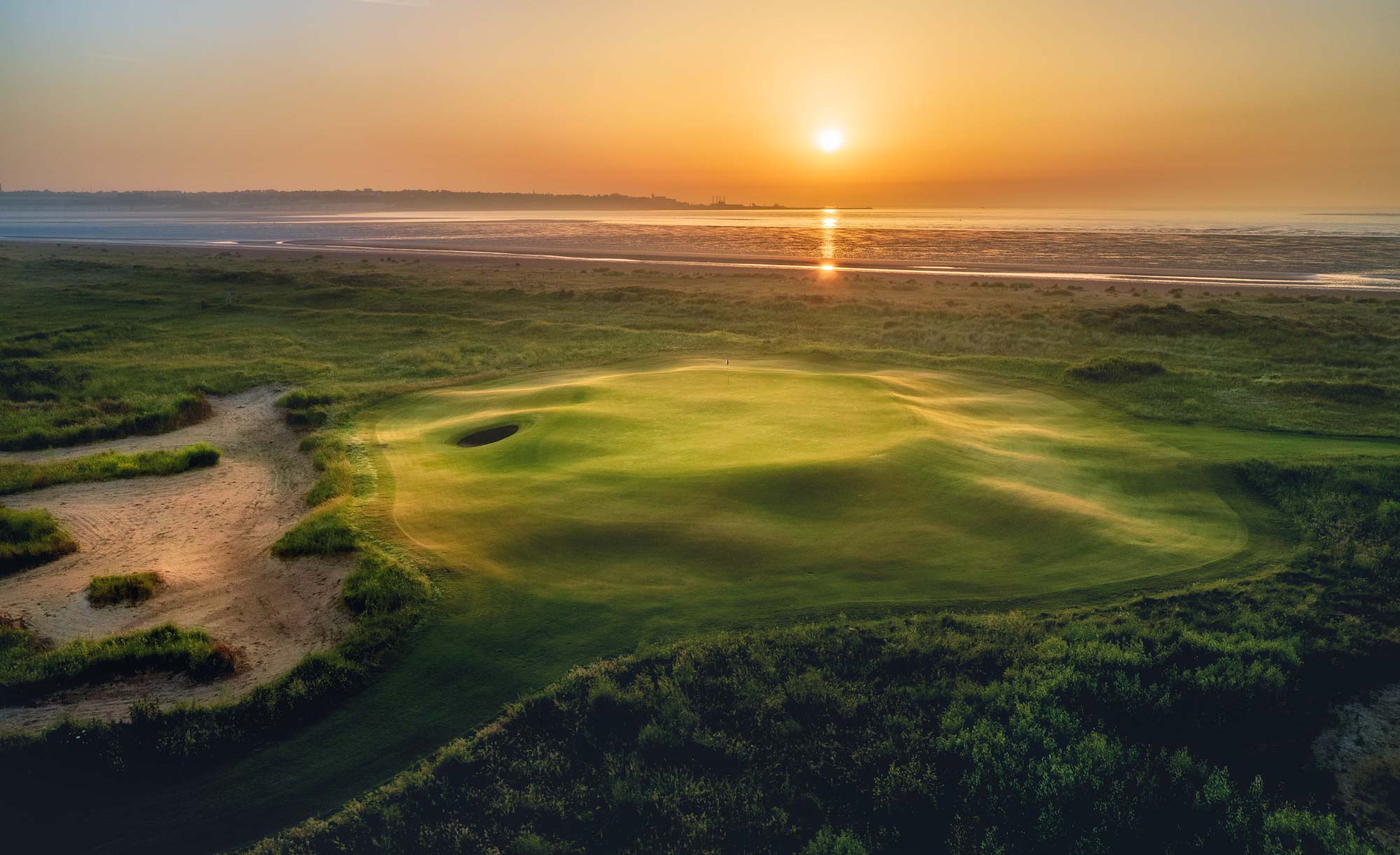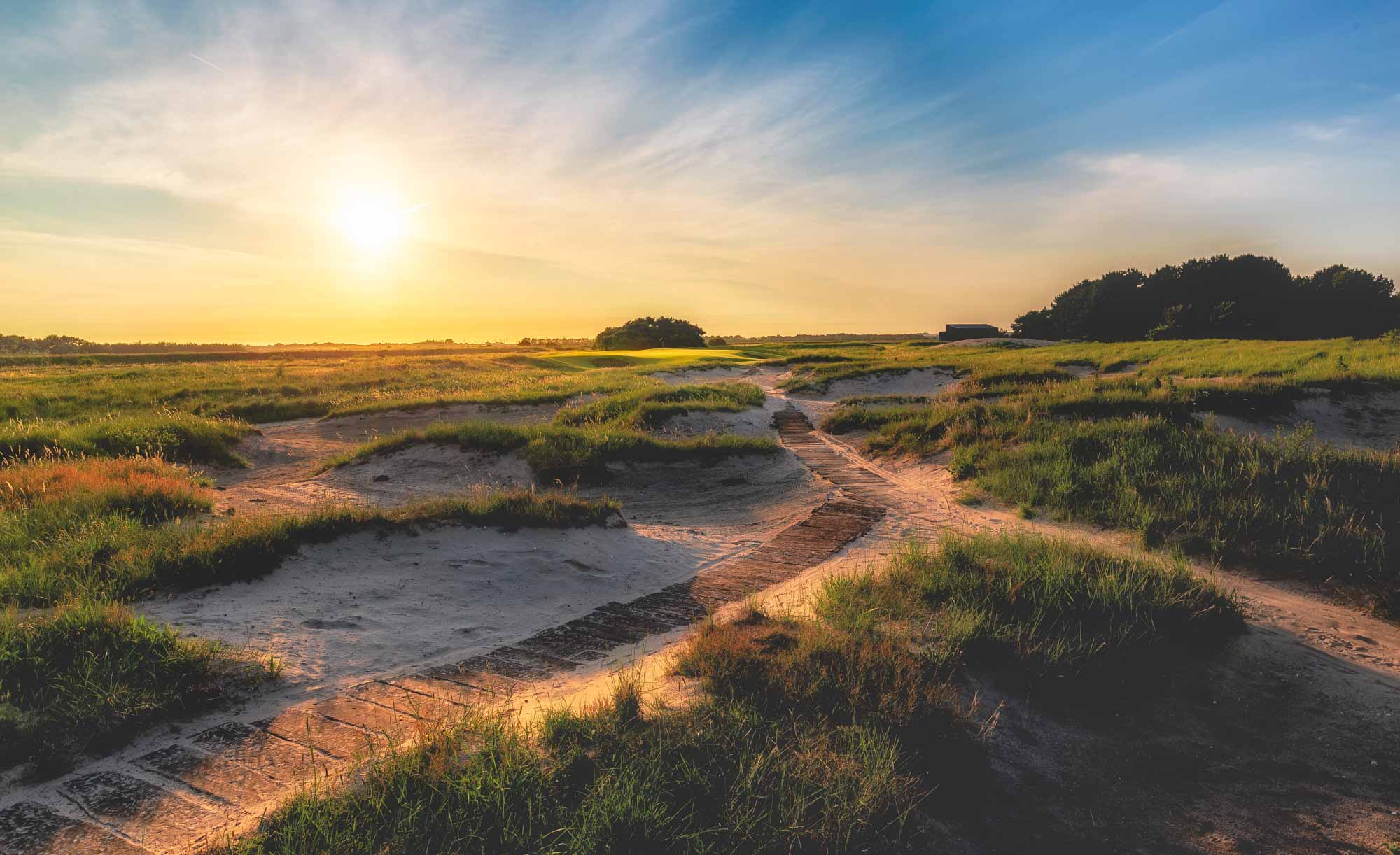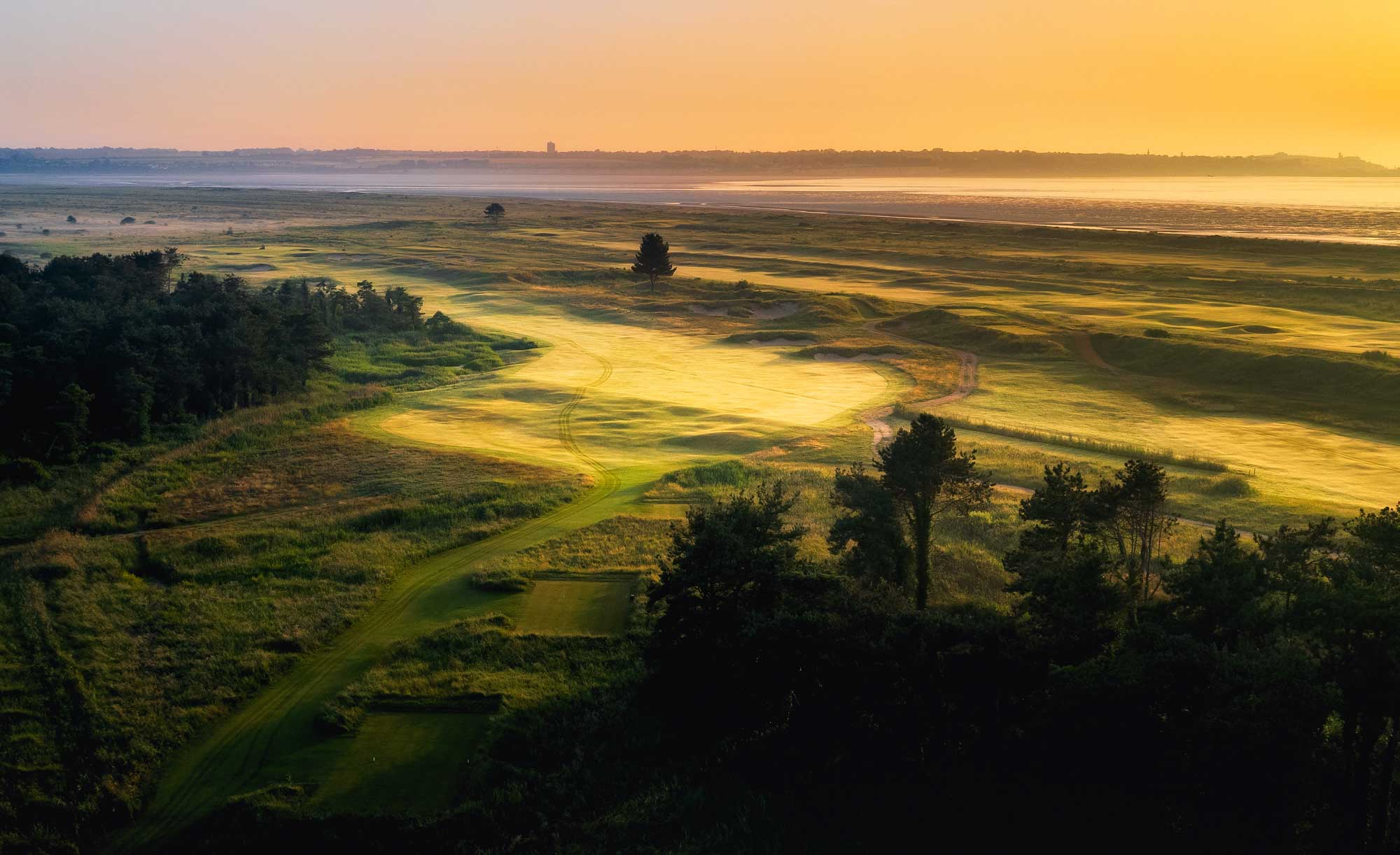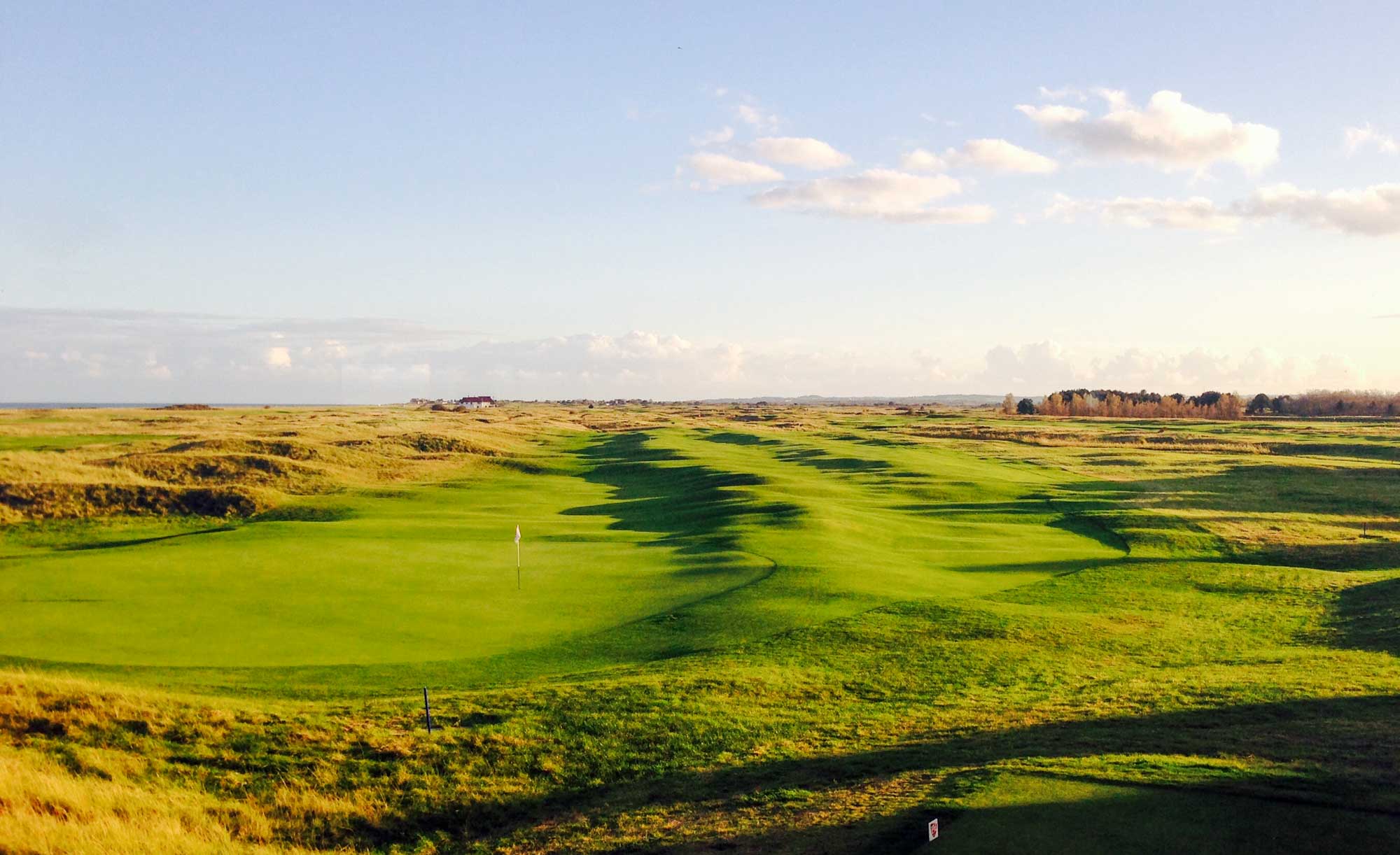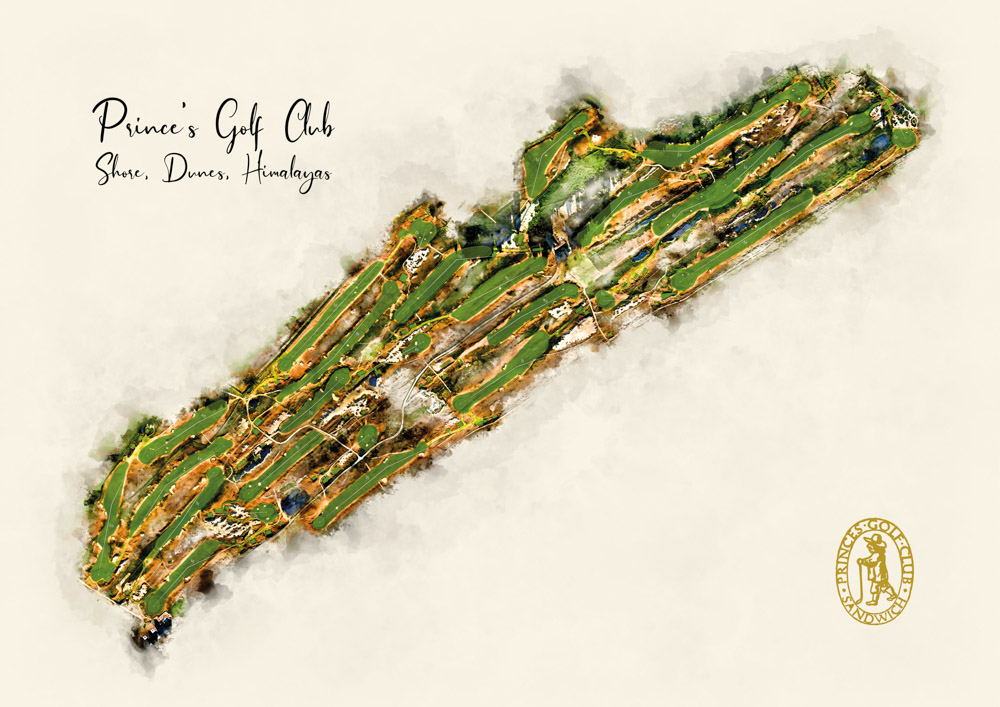Princes Golf Club

Overview
Three nines at Princes make up a total of 27 holes:
- Himalayas
- Dunes
- Shore
The collection of Par 3's at Prince's is impressive. Visually stunning and different from one another.
The Teeing Grounds on Shore are an education in proper placement.
Gene Sarazen won The 67th Open Championship here in 1932 with the modern sand wedge he later donated to the club.
Golf Course Review
For many the idea of living and playing golf in Ireland, Scotland, England and Wales is a one-off, once-in-a-lifetime, bucket-list experience. Despite personally living the dream for a decade, when you see the destinations like Bandon and Sand Valley, the sparkle of British and Irish golf loses some of its luster. That is until you realise Princes Golf Club has reinvented itself as England's answer to destination golf.
27 holes, a dog-friendly clubhouse, on-site accommodation, practice facilities, a polished yet relaxed ambiance that reflects its privileged past as one of only 14 Open Venues, and a full embrace of what's on-trend now.
Princes Golf Club History
Princes Golf Club escaped the ravages of the Great War, but it was all but obliterated during the Second World War, being used as a battle training ground and rifle range. This was likened to throwing darts at a Rembrandt.
The course was prepared in 1905 and opened for play in time for Easter 1906. They were laid out by Harold Hilton, John Low, Herbert Fowler, Cecil Hutchinson amongst others from amongst the great and good of the wealthy upper classes. It was written, "what these gentlemen do not know about the laying out of links, no one can teach them."
In 1905, Princes Golf Club was considered to be the finest links in the Kingdom. One advantage it had was it was built for play with the new rubber ball. The links had no artificial hazards and most green sites were also natural. No two holes played in the same direction.
In 1906, it was decided to push for excellence. The plan for 18 holes became a plan for 36 holes when the opportunity to use the land further north presented itself. Mid-project, Princes Golf Club became 36 holes - 18 on the Championship Course and an 18 hole Ladies Course. This delayed opening until 1907.
Between the two wars, Princes hosted the 1932 Open Championship, won by Gene Sarazen brandishing his newly invented sand-wedge. This wedge along with his spoon was given to the club following his victory.
In 1949, the course was redesigned by Sir Guy Campbell and John Morrison. 27 holes and two practice holes incorporated 17 of the original green sites into the new design. Shore and Dunes are the 18 of the 27 used for Local Qualifying when Royal St George's hosts the Open.
Let's dive a little deeper into the three nines at Princes Golf Club: Himalayas, Dunes, and Shore.
The Himalayas
Known as the member's favourite at Princes Golf Club, the Himalayas has been reimagined by MacKenzie & Ebert. The major change involved the second and third merging to become a monster 622-yard par 5. This meant an additional hole was needed. The new 5th, a par three named Bloody Point, fills the void. It is, well, Bloody Brilliant. Dune scrapes and wetland now adorn the northernmost nine at Prince's. The standout holes on this nine are the 1st, 5th, 7th, 8th, and 9th.
Himalayas Architectural Features - Princes Golf Club
Strategic, Fairway Pot Bunkers: Found on the 1st and 8th, they are ideally located. This is a Golden Age design principle found in the wild.
Varied Bunker Styles: Revetted, pot bunkers are a marvel. However, it is great to see these, as well as: sand-scrapes, blow-outs, sleeper faced, and traditional bunkers throughout.
Aim Indicators: The lone fir is your aiming line on the 2nd and 8th. A great little feature which is reminiscent of the steeple of the church at the Old Course or the lone Fir at Chambers Bay. Properly placed bunkers pinpoint ideal locations. The right-hand side fairway bunker on 9 is a perfect example.
Biarritz Double Green: Dual greens are standard fare at the Old Course. Unique features that rare in the UK and even more so Stateside. Combine it with a Biarritz and you have a unique feature on the 3rd and 8th.
Bite Off as Much as You Can Chew Tee-shots: Proper placement of teeing grounds at appropriate angles to the fairway ensures strategic value is high. Options abound on the 1st, 4th, 8th, and 9th.
Variety: There are two par 3's. Between them, one is long the other short. One has no bunkers whereas the other has a front pot bunker and is surrounded by dunes and sand scrapes.
The 5th satisfies the need for a picturesque hole with the backdrop of the sea and the views it affords. The green complex with its runoffs shorn short provides a multitude of options at recovery. It is simply elegant.
The 7th is a simple concept that puts a premium on the shot shape, distance control, and angle of approach. Played to a green draped over a dune, any miscue will mean a delicate recovery shot. The shot from the right of the green is 30 feet below the putting surface to a green that runs away from you that can result in one going up and over the green.
The 8th is reminiscent of the tee shot of the Eight at Brancaster. There are wetlands that have been introduced before and after a fairway speckled with strategically placed pot bunkers that runs away from you. The hole itself is drivable but the green runs away from the intended line of play. No matter what you choose to do, you will second guess your decision and have to think as much on your approach or recovery.
The 9th is made by the Sarazen sleeper bunker guarding the front left of the green. Cavernous, the premium on 9 is shot placement not distance off the tee. The correct side of the fairway to be on is the right. Anything on the left and access to a rear pin is almost impossible. Thinned trees, open dunes, and bunkers on the Line of Charm along with one bunker influencing shots from the tee, Tom Simpson would no doubt love the simple elegance of the final hole on the Himalayas.
The Dunes
Half of the Open qualifying course, Himalayas has been tweaked and cosmetically enhanced by MacKenzie & Ebert. South of the clubhouse, the Dunes is a counter-clockwise loop turning at Royal St George's.
Dunes Architectural Features - Princes Golf Club
Variety of Fairway Contours: The fairway contours on Princes are unique. It neighbours at Royal St George's and Deal both have big and bold patches whereas Prince's has constant ripples, lumps, humps and bumps. Holes 4 and 5 are relatively tame compared to the rest.
Hog Backs and Their Use: The intimidating opening hole has a large carry bunker affecting play whether your chosen line is safe or aggressive. Successfully carried, you find yourself on the spine of a hogs back fairway playing along the spine of a hogs back green. The green has the feel of the 5th at Royal Worlington and Newmarket, falling away on the left and right. The second green is similar to 7 on the Himalayas. With the green’s spine running along the hogs back there are three bunkers protecting the green on the front and right side. Anything left and long leaves an up and overshot to a green running away from you. This is a good example of introducing two different ways of using a single feature.
The Transition from 3 to 4: Dunes have been created to add a barrier to the left and rear of the third green. Walking back and around them, you gain elevation slowly until you arrive on the 4th tee that climaxes with an incredible sea view. These details coupled with manicured grass path transitions between greens and tees are small features that imperceptibly set the course off.
The 1st is intimidating and visually deceptive. Playing diagonally to a ridge that runs the entire length of the hole, the landing zone looks impossibly narrow. This is due to the placement of a diagonal 40-yard long bunker fronting a hogs back fairway. On the same line eye line are two more bunkers beyond the fairway. This layering of elements creates a visual which belies the fact the landing zone is 90 yards wide. A single pot bunker 35 yards in front of the green makes the running approach a bit more complicated. An aerial approach to this green needs to be perfect or it will be rejected left or right. The spine of the green and fairway run the length of the hole in line with the ridgeline of the dunes. Most golf holes would be routed on either side. This one doesn’t and is better for it.
The 2nd is a short one-shot hole similar in design approach to the Seventh on the Himalayas with the orientation being left to right as opposed to right to left. This one, however, has bunkers front and right. Newly uncovered sand scrapes and dunes land along with a sleeper path makes the walk from tee to green as memorable as the hole itself.
The 3rd incorporates a brook and O.B. into play. The tighter you are to the right side of the fairway the better your angle into the green. This is also where the brook and O.B. lie in wait. Play with fire if you must but you will eventually get burnt. A variety of bunker types are seen on this hole: revetted, dunes and blowouts. A hybrid blowout-revetted bunker is found on the front left of this amphitheater green.
The 4th is reminiscent of the 3rd at Brancaster. The Approach shot is semi-blind due to a string of three bunkers which needs to be played over on the approach. The illusion is the green is immediately behind the string of bunkers but in reality, it is 40 yards beyond on a plateau. The same illusion is used to good effect on 17 at West Sussex by a certain Sir Guy Campbell as well.
The 5th and 6th both have green complexes which are perched atop dunes and without immediate bunkers guarding them. Of note is the simplicity of their defence. The depression which collects on the front left of 5 and ditch on the left side of 6 are natural features that are used to full effect. Proof that bunkers are not needed to provide an adequate test.
The Shore
The last nine is a clockwise loop which is south of the clubhouse, intertwines with Dunes going out and coming in. It makes up half of the Open Qualifying course along with the Dunes. Holes of particular architectural note are 5, 6, and 7.
Shore Architectural Features - Princes Golf Club
Teeing Grounds: Princes Golf Club and in particular the Shore is an education of how much difference a properly positioned teeing ground can make.
Look at the 1st hole from the Blue tee then both of the White tees. Notice that just a couple of yards and feet in elevation can completely change the view of the entire hole.
Now, do the same for the 2nd. The new tees over the sand scrapes and wetlands are superb. Despite not being in play, they offer intrigue and suspense.
The tees on the first two holes allow the course to be set up in a multitude of ways for variety, interest, or playing conditions. In essence, the first two holes could be played six ways depending on the choice of tee location.
Both the 3rd and 4th teeing grounds find themselves in the dunes with open scrapes. They are stunning, visually impactful, and offer variety to the eye.
The new 5th is another stunning production from MacKenzie and Ebert. Set amongst dunes and sand scrapes the walk from the 4th green the 5th tee mimics the Dunes transition from 3 to 4. A short one-shot hole in the three teeing grounds on the left provide options from 100 to 160 yards to the centre of the green over no man’s dunes land. Again, each tee provides a different dynamic due to clever layering and the position of the three-pot bunkers. The backdrop is the sea framed by the white cliffs of Ramsgate and the walk over sleeper paths through dunes is Bandon-esque. The green has two tiers that fall away from the intended line of play. A rare modern green built in a classic Golden Age manor which must be applauded.
The 6th has 5 tees that can be used to make this a risk and reward par 4 or a solid two-shot par four. Again, this vulnerable-looking green relies upon contours as a defense. It is not protected by any bunkers but will wreak havoc if not respected.
The tee for the 7th sits high above the course making for some variety with an elevated tee shot to the fairway below. The tee on 6 provides the best view of its neighbour Royal St George's and holes 13 and 14. Similar to the greens on Dunes 5 and 6, this volcano green is tucked away perched atop a dune almost entirely left of the line of instinct.
Routing and Direction: In any out and back routing, the challenge can be changing the predominant direction to give a reprieve from a constant gale or to add variety. Two Par 3's in 3 and 5 give break up the outward routing artfully. Again, this routing along with tees at angles to the fairways mean variety even in a constant, prevailing wind.
The 9th Fairway: It is a marvel. It may well be the most memorable fairway you've ever played. You can literally lose your playing partners due to the scale and rampant nature of its contours.
Princes Golf Club Synopsis
Princes Golf Club is on-trend and offers 27 holes of exceptionally intriguing golf. For the architecturally inclined golfer, there is a lot to love here.
Design aspects reminiscent of Royal West Norfolk, Royal Worlington, West Sussex, and St Andrews are proudly on display and used to good effect.
If you’ve played any of the nines at Princes Golf Club in the past, you must visit again. Reinvented and reimagined, one gets the feeling Princes Golf Club is a destination we will be hearing much more about… and rightfully so.
Princes Golf Club Artwork
Take a closer look at the Princes Golf Club artwork.

Princes Golf Club - Videos

Featured Architect: MacKenzie, Alister
As taken from his book, Golf Architecture, Alister MacKenzie felt the following were essential: The course, where possible, should be arranged in two loops of nine holes. There should be a large proportion of good two-shot holes and at least four one-shot holes. There should be little walking between...

